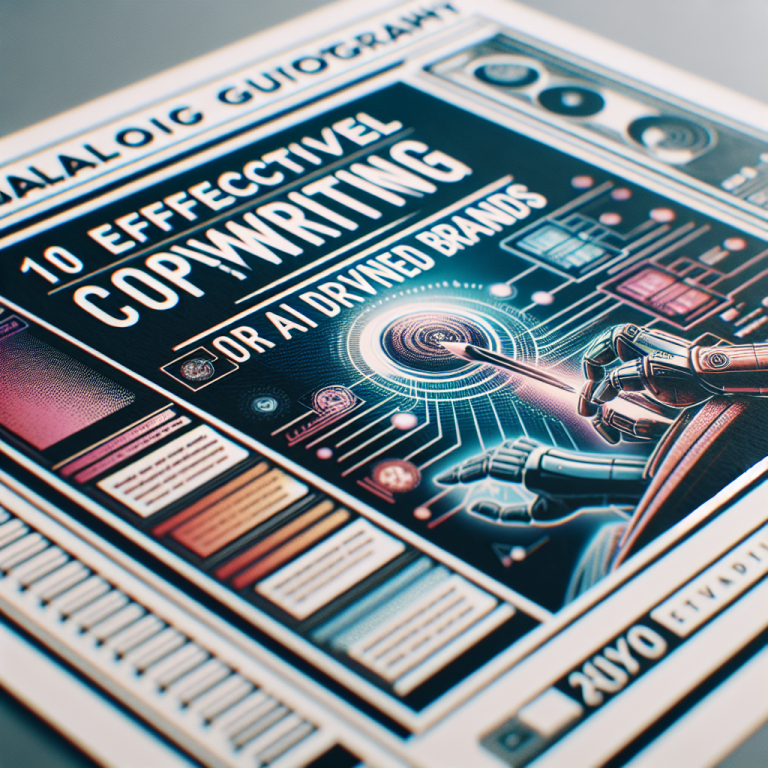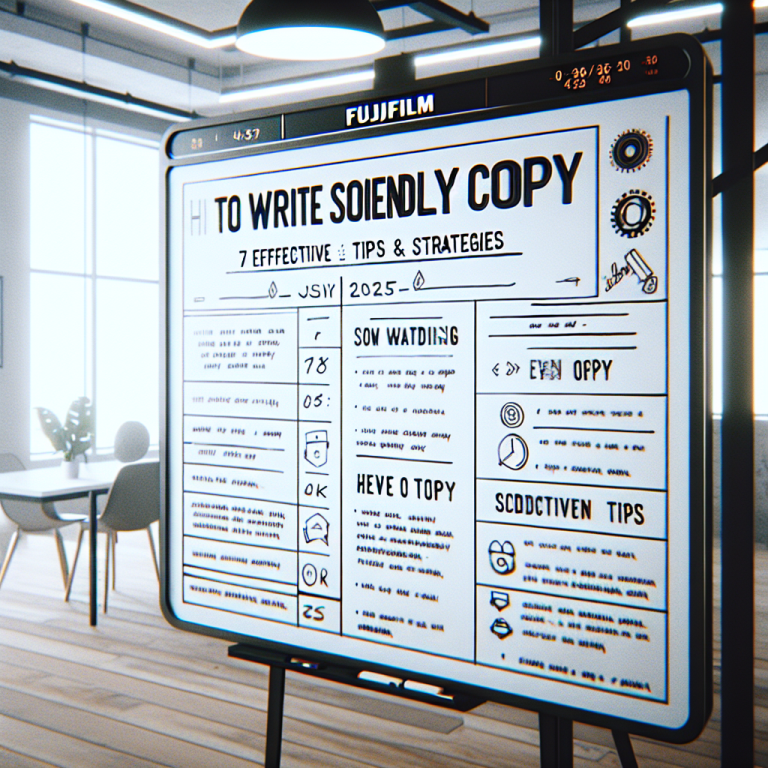10 Effective Content Repurposing Strategies to Boost Your 2025 Results
- 1. Break Long Content Into Bite-Sized Pieces
- 2. Transform Content into Visuals
- 3. Repurpose Webinars into Multiple Formats
- 4. Update and Reuse Old Blog Posts
- 5. Turn Content into Podcasts or Audio Clips
- 6. Compile and Curate Resource Lists
- 7. Create Social Media Clips from Larger Content
- 8. Adapt Content for Email Newsletters
- 9. Develop Interactive Content Pieces
- 10. Use Content for Retargeting Campaigns
1. Break Long Content Into Bite-Sized Pieces
Why Short-Form Content Matters
In 2025, attention spans continue to shrink, making short, digestible content more vital than ever. By breaking down comprehensive articles, guides, or reports into smaller chunks, you make your content more accessible and shareable. This approach not only increases engagement but also allows you to target multiple platforms effectively.
For example, a 3,000-word white paper can be segmented into e-mail snippets, social media posts, and infographics. Each piece serves a purpose and reaches different audience segments, maximizing your content investment. This is a core element of effective content repurposing strategies.
Applying this method boosts your overall content metricsâreadership, shares, and backlinksâby turning your comprehensive content into multiple entry points. Continually refine this strategy based on analytics to boost results in 2025.
Practical Tips for Implementation
- Create a content map to identify key sections for repurposing.
- Use tools like Canva or Adobe Spark to design visual snippets from text.
- Schedule snippets across your content calendar for steady engagement.
2. Transform Content into Visuals
Using Data and Statistics Visually
Visual content continues to dominate in 2025, with data showing posts with images receive 2-3 times more engagement than text-only updates. Transforming blogs, articles, or reports into infographics or short videos leverages this trend. Visuals help simplify complex information and make it more memorable.
If you have in-depth research or case studies, condensing key insights into infographics can dramatically increase shareability. Tools like Piktochart or Venngage make this process accessible for marketers of all skill levels.
Remember, effective visuals should complement your message without overwhelming it. Incorporate branding and easy-to-read stats for maximum impact.
Best Practices for Visual Content
- Use high-contrast colors and clear fonts.
- Add alt text with keyword phrases for SEO benefits.
- Embed visuals in blog posts, emails, and social media for wider reach.
3. Repurpose Webinars into Multiple Formats
From Live Event to Evergreen Content
Webinars are an excellent way to engage your audience, but their value extends beyond the live session. In 2025, repurposing webinars into blogs, short clips, and even downloadable assets ensures your investment in time and resources pays off over the long term.
Convert your webinars into multiple snippets for social media channelsâshort videos that highlight key points can spark interest and lead viewers to the full recording or related resources. Additionally, transcribing webinars into blog posts creates SEO-optimized content that can attract organic traffic.
The goal is to maximize content utility, turning a one-time event into a comprehensive content ecosystem.
Steps to Efficient Repurposing
- Edit recordings into 2-5 minute highlight clips.
- Use transcription to create detailed blog content.
- Design infographics summarizing webinar takeaways.
4. Update and Reuse Old Blog Posts
Refreshing Evergreen Content
In the fast-paced digital landscape of 2025, outdated blog content can become a liability. Revisiting older posts, updating statistics, and enhancing them with new insights ensures your content remains relevant and authoritative.
This process is a cornerstone of effective content repurposing strategies. It saves time and resources while maintaining consistent content quality. Moreover, updating posts with current data boosts their SEO performance, increasing organic traffic.
Make it a habit to audit your blog archive quarterly and refresh articles that still hold value but need a professional update.
Practical Techniques for Content Refresh
- Update statistics, references, and examples.
- Rewrite sections for clarity or new branding voice.
- Add new multimedia elements like images or videos.
5. Turn Content into Podcasts or Audio Clips
Leveraging Audio for Engagement
Podcasts continue to grow in popularity, with listeners seeking content on commutes, workouts, or multitasking routines. Converting articles or blog content into podcasts or short audio clips is an exceptional way to expand your reach in 2025.
You don’t need to be a professional speaker. Use simple tools like Anchor or Audacity to record concise summaries or interviews based on your existing content. Not only does this diversify your content portfolio, but it also taps into the rising audio consumption trend.
Include transcripts on your site to improve SEO and accessibility, reinforcing your content repurposing strategies.
Actionable Tips for Audio Content
- Script key points to stay concise and clear.
- Use quality microphones for clear sound.
- Publish episodes on platforms like Spotify, Apple Podcasts, and Google Podcasts.
6. Compile and Curate Resource Lists
Adding Value Through Curated Content
Creating resource lists or curated collections can significantly enhance your authority. This is especially effective as part of content repurposing strategiesâgathering and organizing existing content into a valuable guide or resource hub.
For example, a list of top tools, articles, and case studies related to your niche not only provides value to your audience but also encourages backlinks and shares. Keep these lists updated to maintain relevance and SEO benefits.
This strategy helps you position yourself as a thought leader and improves your site’s SEO footprint in 2025.
Best Practices for Resource Curations
- Use clear categories and formatting for easy navigation.
- Include brief descriptions and your insights on each resource.
- Promote curated lists via email and social media.
7. Create Social Media Clips from Larger Content
Maximizing Small Content for Social Platforms
Social media thrives on quick, engaging content. Extracting short video clips, quote graphics, or soundbites from your larger pieces is a powerful way to amplify your message in 2025.
For example, a 10-minute webinar can be edited into multiple 30-second clips that highlight key takeaways. These can be posted across platforms like TikTok, Instagram, and LinkedIn to reach diverse audiences.
Consistent posting of these snippets boosts your visibility and reinforces your brandingâintegral components of effective content repurposing strategies.
Tips for Effective Social Media Content
- Focus on one catchy message per clip.
- Add captions and branding elements like your logo or hashtag.
- Plan a posting schedule aligned with your audienceâs active times.
8. Adapt Content for Email Newsletters
Engaging Subscribers with Repurposed Content
Newsletters remain a direct line to your audience. Repurposing your existing content into email-friendly formatsâsuch as summaries, tips, or exclusive insightsâcan increase engagement and click-through rates in 2025.
Use snippets from your blog, videos, or webinars as the core of your newsletter. Personalize content based on your subscriber preferences to provide value and foster loyalty.
This strategy not only extends the lifespan of your content but also helps nurture your leads effectively through a targeted, personalized approach.
Design Tips for Email Content
- Use compelling subject lines relevant to your repurposed content.
- Include clear calls-to-action to drive traffic back to your website.
- Optimize for mobile devices to ensure readability.
9. Develop Interactive Content Pieces
Creating Engagement-Driven Content
Interactive contentâquizzes, calculators, assessmentsâcan dramatically increase user engagement and dwell time. Integrating these elements into your strategy in 2025 allows you to provide personalized experiences while showcasing your expertise.
For instance, transforming a problem-solving article into an interactive quiz encourages users to participate actively and share their results. This not only deepens their connection but also generates valuable data for retargeting campaigns.
Start small with tools like Typeform or Outgrow, and expand as you gather insights on what resonates best with your audience.
Design and Implementation Tips
- Ensure your interactive elements match your brand style.
- Use data collected to inform future content creation.
- Incorporate interactive content into your overall content repurposing strategies.
10. Use Content for Retargeting Campaigns
Smart Retargeting with Repurposed Content
In the competitive landscape of 2025, retargeting remains crucial for conversions. Using your existing content to feed personalized ads or email follow-ups ensures your audience remains engaged and moves down the funnel.
For example, a blog post or video a user viewed can be served as a retargeted ad, reinforcing your message. This is a cornerstone of content repurposing strategies that focus on maximizing ROI from your content assets.
Data shows that retargeted campaigns can increase conversions by up to 147% when integrated with dynamic content tailored to user behavior.
Implementation Tips
- Create segments based on user interactions with your content.
- Use platform-specific retargeting options like Facebook or Google Ads.
- Update retargeting ads regularly with fresh content variations.
Conclusion
In 2025, mastering content repurposing strategies is key to staying competitive and maximizing your content marketing ROI. By transforming existing assets into various formats and channels, you extend their lifespan, reach new audiences, and increase engagement. Whether you’re breaking down lengthy articles, creating engaging visuals, or leveraging audio and interactive content, each strategy plays a vital role in your overall success.
Start implementing these 10 effective content repurposing strategies today and watch your results soar in 2025!
Frequently Asked Questions
1. What are effective content repurposing strategies for 2025?
Effective strategies include breaking content into smaller pieces, transforming content into visuals, repurposing webinars, and utilizing content for retargeting campaigns, among others. These approaches ensure your content remains fresh and engaging across multiple channels.
2. How can I optimize my repurposed content for SEO?
Use keyword-rich titles and descriptions, include alt text with relevant keywords, link internally to related pages, and update outdated information to boost SEO performance of your repurposed content.
3. What tools assist in content repurposing?
Popular tools include Canva, Piktochart, Lumen5, Anchor, and Outgrow. These platforms facilitate the creation of visuals, videos, audio content, and interactive elements with ease.
4. How often should I refresh my old blog posts?
Review your blog archive quarterly, updating statistics and adding new insights. Regular refreshes keep content relevant, improve SEO, and give your audience the most current information in 2025.









